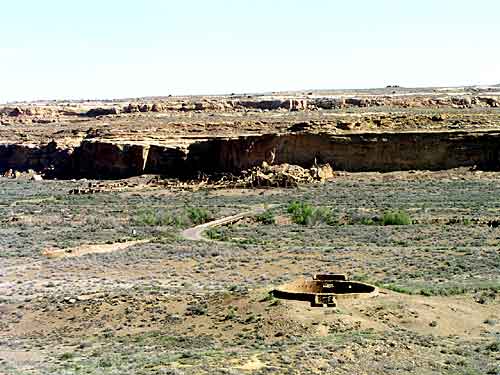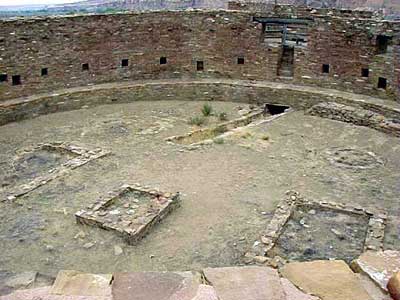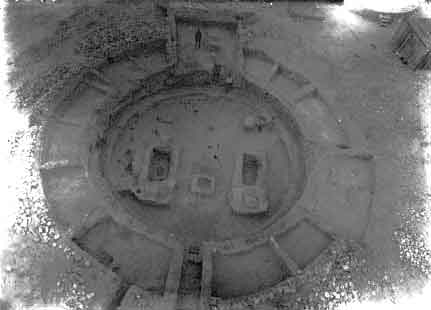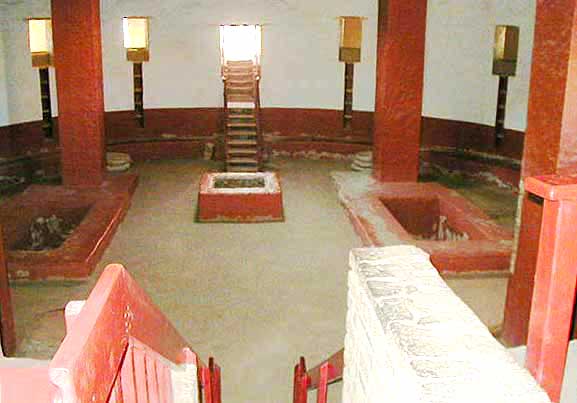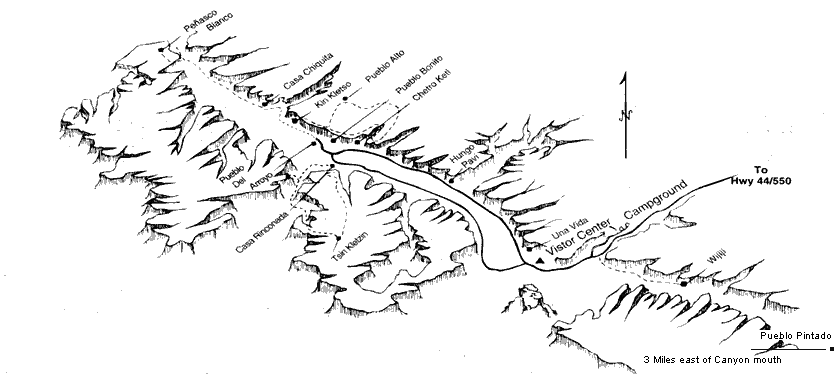
In Report #2 I used the great kiva at Chetro Ketl to illustrate the salient features of Chocoan great kivas, noting along the way that Chetro Ketl was about half a mile east of Pueblo Bonito. It occurred to me, as I began to think about Casa Rinconada, that it might be helpful to illustrate the relationship among the constructions in Chaco Canyon. (This map comes from one of the information leaflets about Chaco.) I doubt that I'll get around to writing about all, or even most, of them but...well, we'll see. In the instant, take a moment to locate Pueblo Bonito; Chetro Ketl; and Casa Rinconada, directly across Chaco Wash from Chetro Ketl. (Location in time is important, too—here's a time line for construction in Chaco Canyon.)
Note that the "main" entrance under which the lower entrance passes, is T-shaped, a characteristic also of the great kiva at Chetro Ketl (Report #2). Rinconada has two T-shaped entrances, opposite one another on a precise north-south alignment. Not all great kivas feature a T-shaped door (every one is different despite their many common elements) but the fact that these curious doors appear in great kivas gives weight to the supposition that they are symbolic rather than merely utilitarian. Adding to the symbolism is the precise north-south orientation of the entrances and the floor vaults at Casa Rinconada. 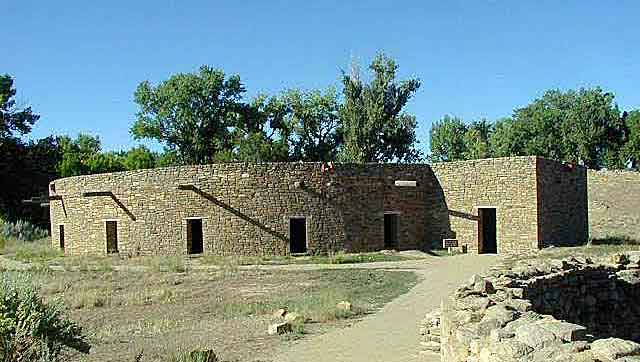 The only Chacoan great kiva to be totally reconstructed was initially excavated in February-March 1921 by Earl H. Morris under the auspices of the American Museum of Natural History (Morris 1921). In light of the reality that far too many archeological expeditions are published long after the work is done—or not at all—the fact that Morris published his excavation of what he called "The House of the Great Kiva" in May of the same year is little short of astounding. In the introduction to his report, Morris explained that, though work at Aztec Ruins had been going on since 1916, attention to the great kiva had been avoided because of the amount of labor involved. Then "the accidental discovery of supplementary chambers concealed beneath the debris which formed the rim of the crater, completely altered the point of view, because it indicated the presence of a building markedly different from the ordinary kiva." In a later Report I will discuss Aztec Ruins itself in some detail. But here I want to focus specifically on Chacoan great kivas as a type. No one should be surprised, however, that Aztec's great kiva has unique features (especially Morris' "supplementary chambers"), nor that their functions should be puzzling.
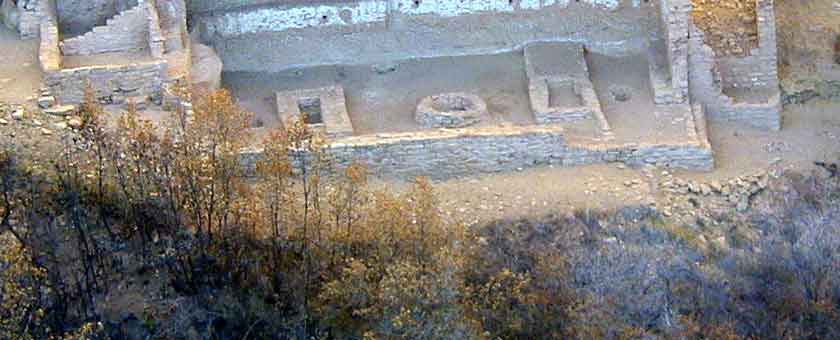 Not all great kivas are round, even if they are Chacoan great kivas—or so it would seem if Fire Temple can be said to have been Chacoan. Certainly, apart from its rectangular shape, it has some of the singular features of Chacoan great kivas: raised firepit, floor vaults, bench, niches (not visible in the photo). Unlike Casa Rinconada (which is situated in the open) or the great kiva at Aztec Ruins (which is in a great house plaza), Fire Temple sits in a rock shelter twenty-five feet above the floor of a canyon, Fewkes Canyon at Mesa Verde National Park. Fire Temple was excavated (and named) by Jesse Walter Fewkes of the Bureau of American Ethnology in the summer of 1920. Virtually nothing was done to or with it until 1951, when Francis Cassidy undertook to clean it and document its features (Cassidy 1965). Today it can be seen from the canyon rim but not visited by the public. Cassidy believed that the shape of Fire Temple was determined by its position on the side of the canyon. But why would a Chacoan great house be built where it couldn't be round? Perhaps the very fact that it is at Mesa Verde is sufficient for an explanation. Dates: Casa Rinconada was built in the last part of the 11th century. The great kiva at Aztec Ruins was constructed in the first half of the 12th century. And Fire Temple dates from the middle or end of the 13th century. Aztec is Chacoan through and through. If the great kiva there were magically transported to Chaco Canyon it would be right at home. Not so Fire Temple. Not only was it built late in Anasazi history but it was built by people who could have been influenced only by the memory of Chaco. "The relationship between Chacoans and Mesa Verdeans is not clear at this time and presents a need for further research" (Vivian & Hilpert 2002:163) |
